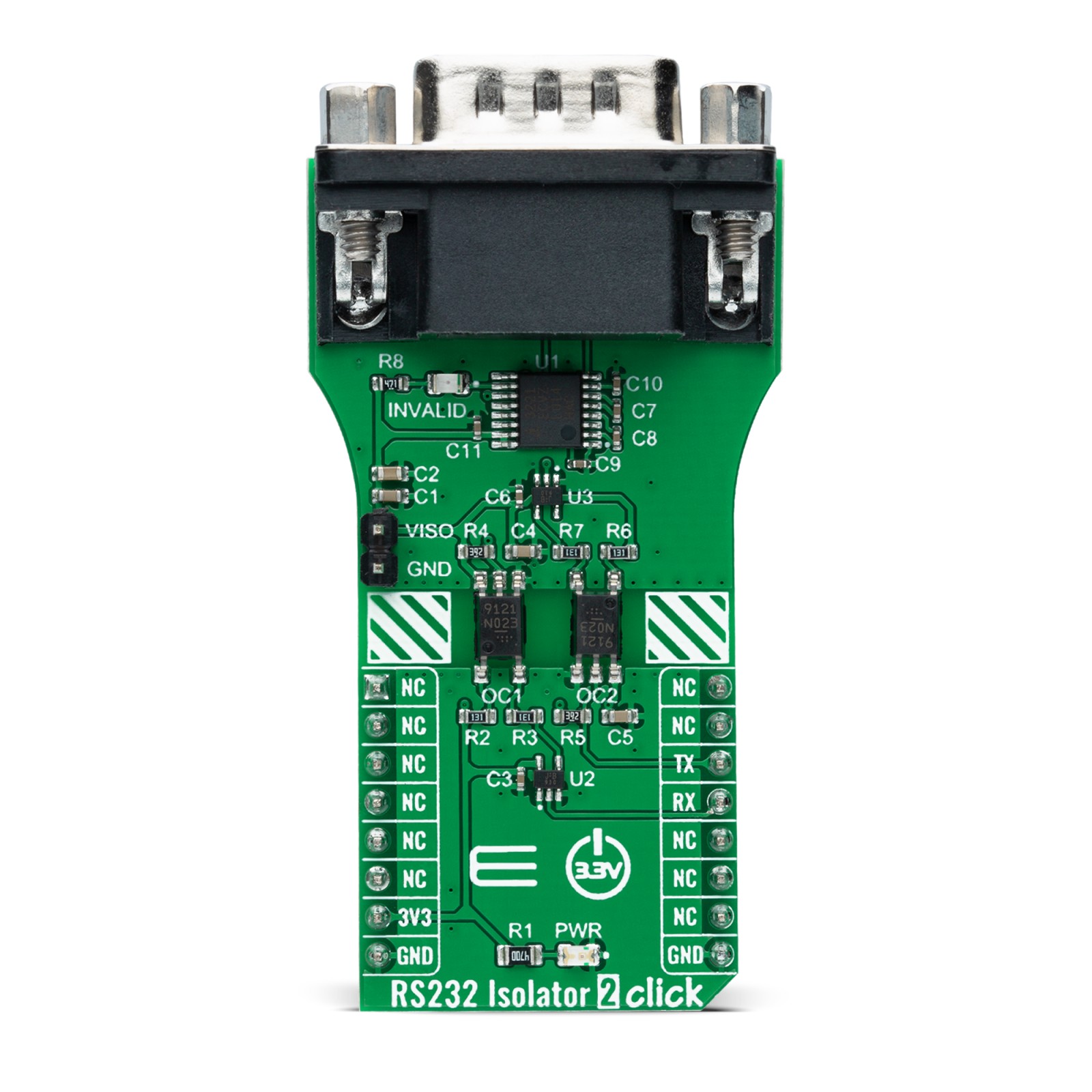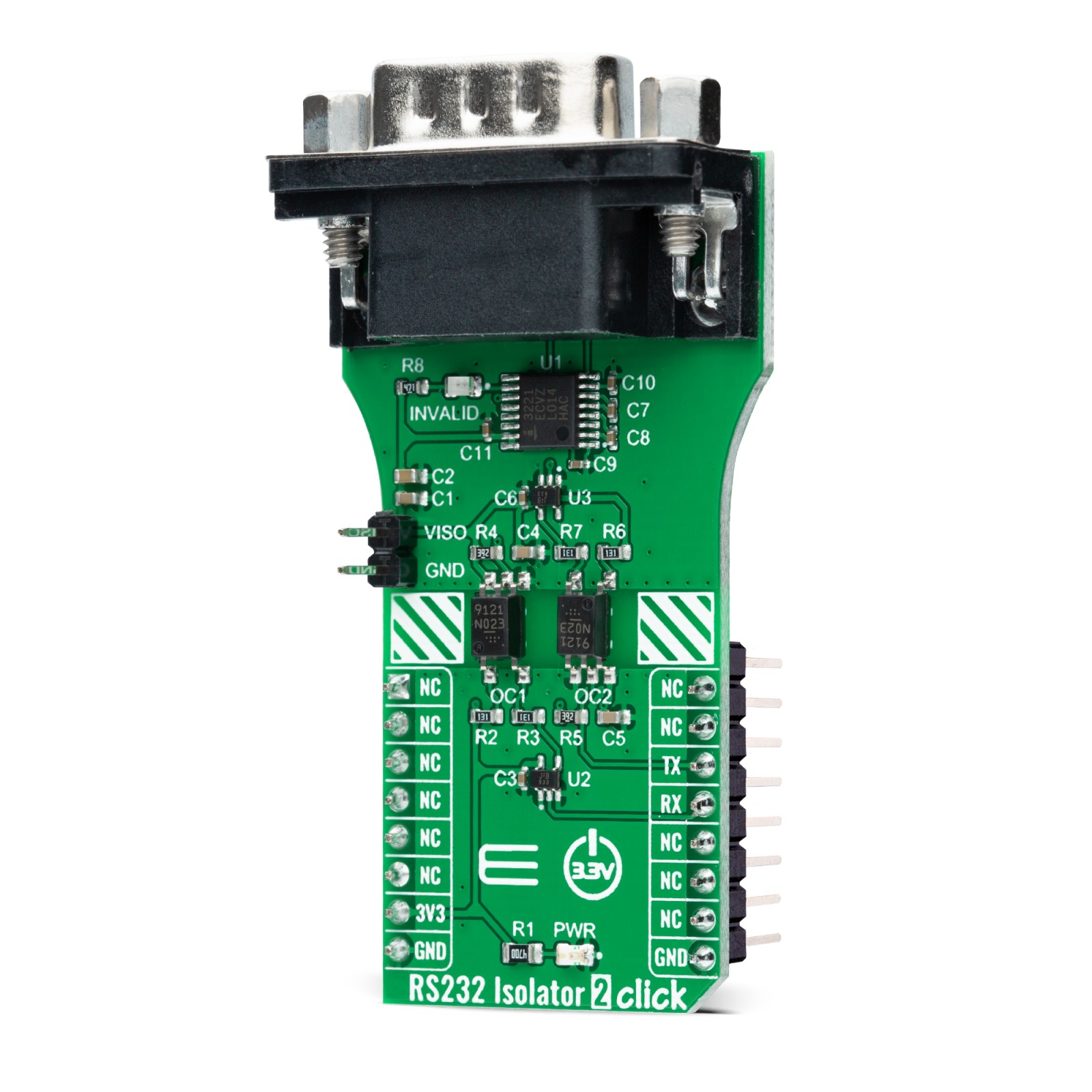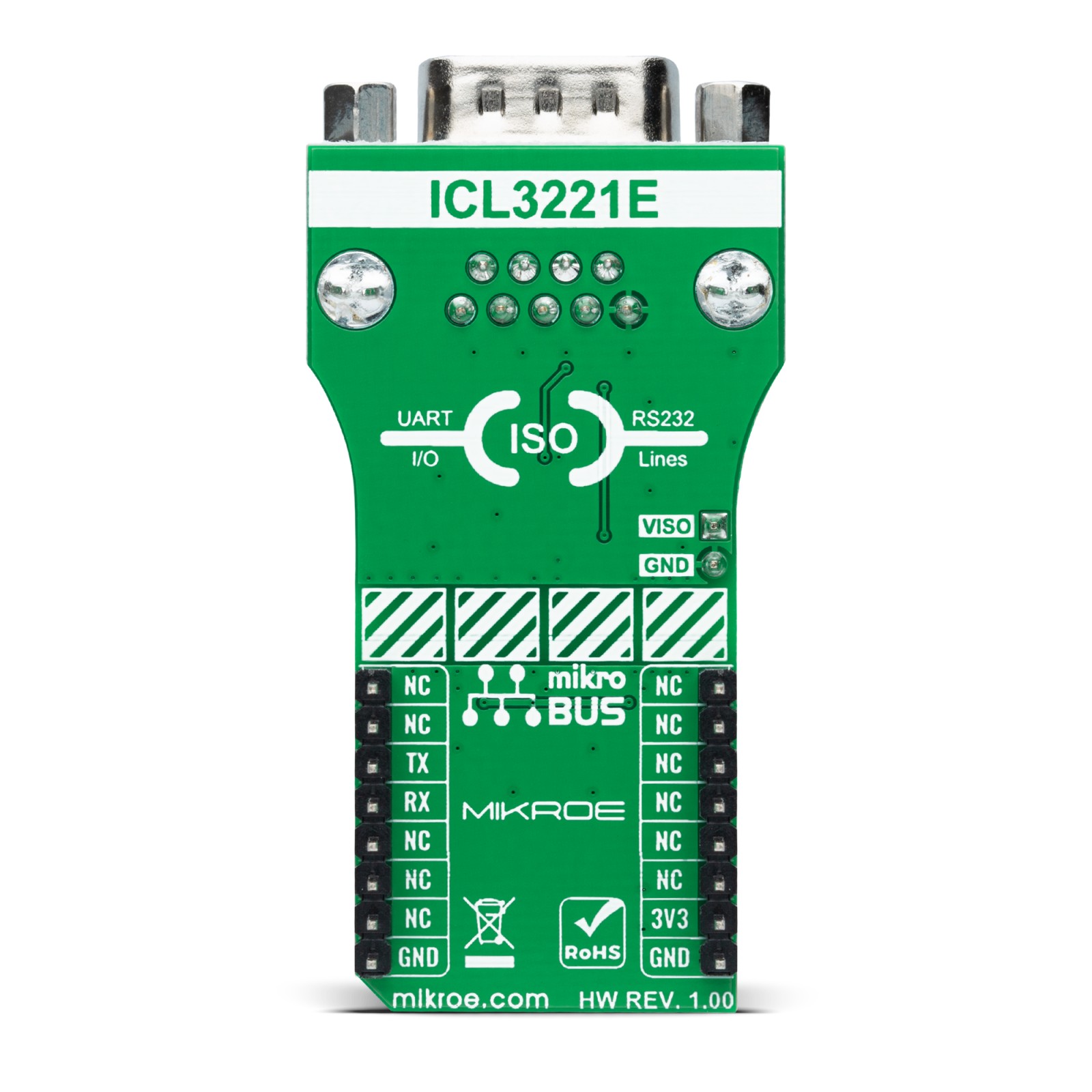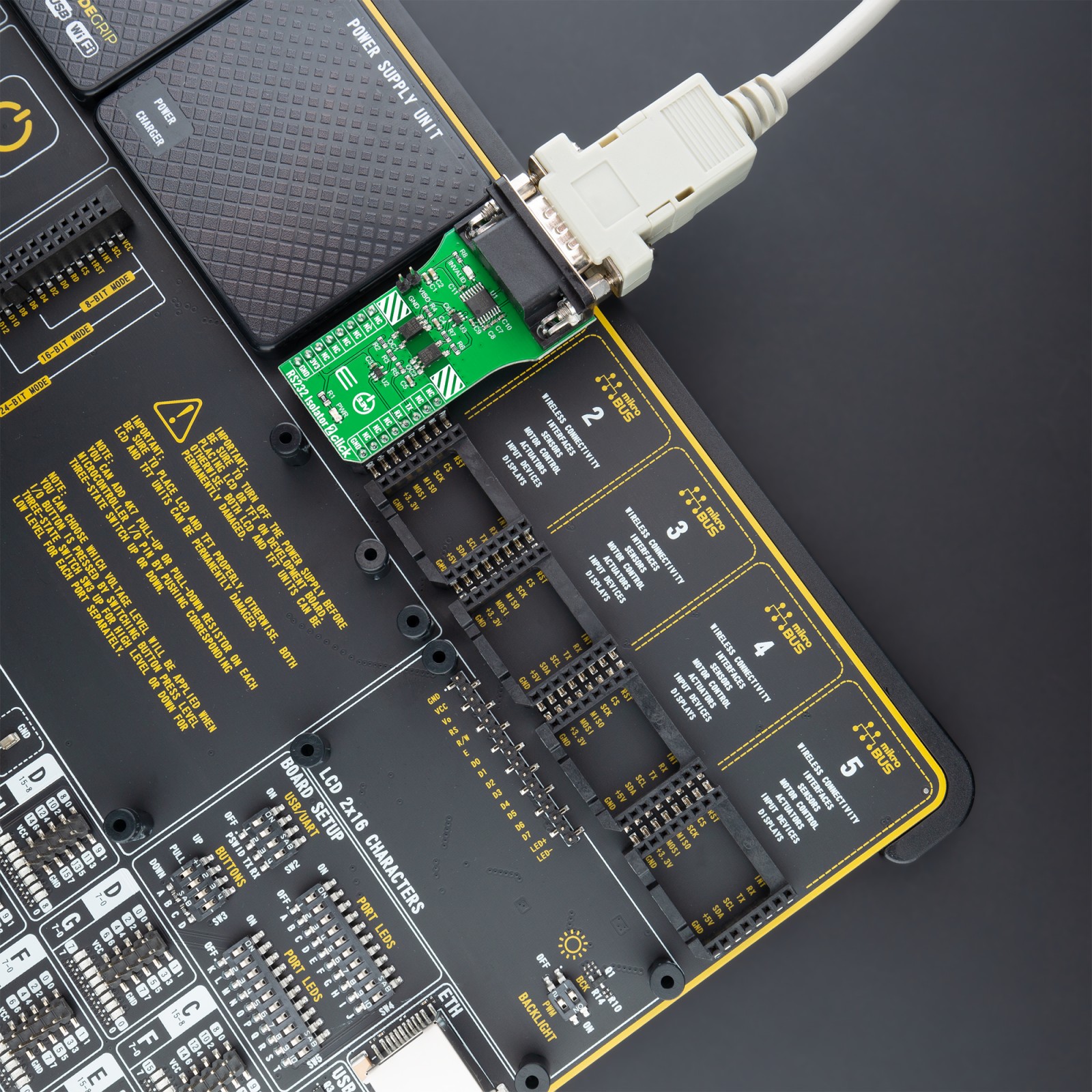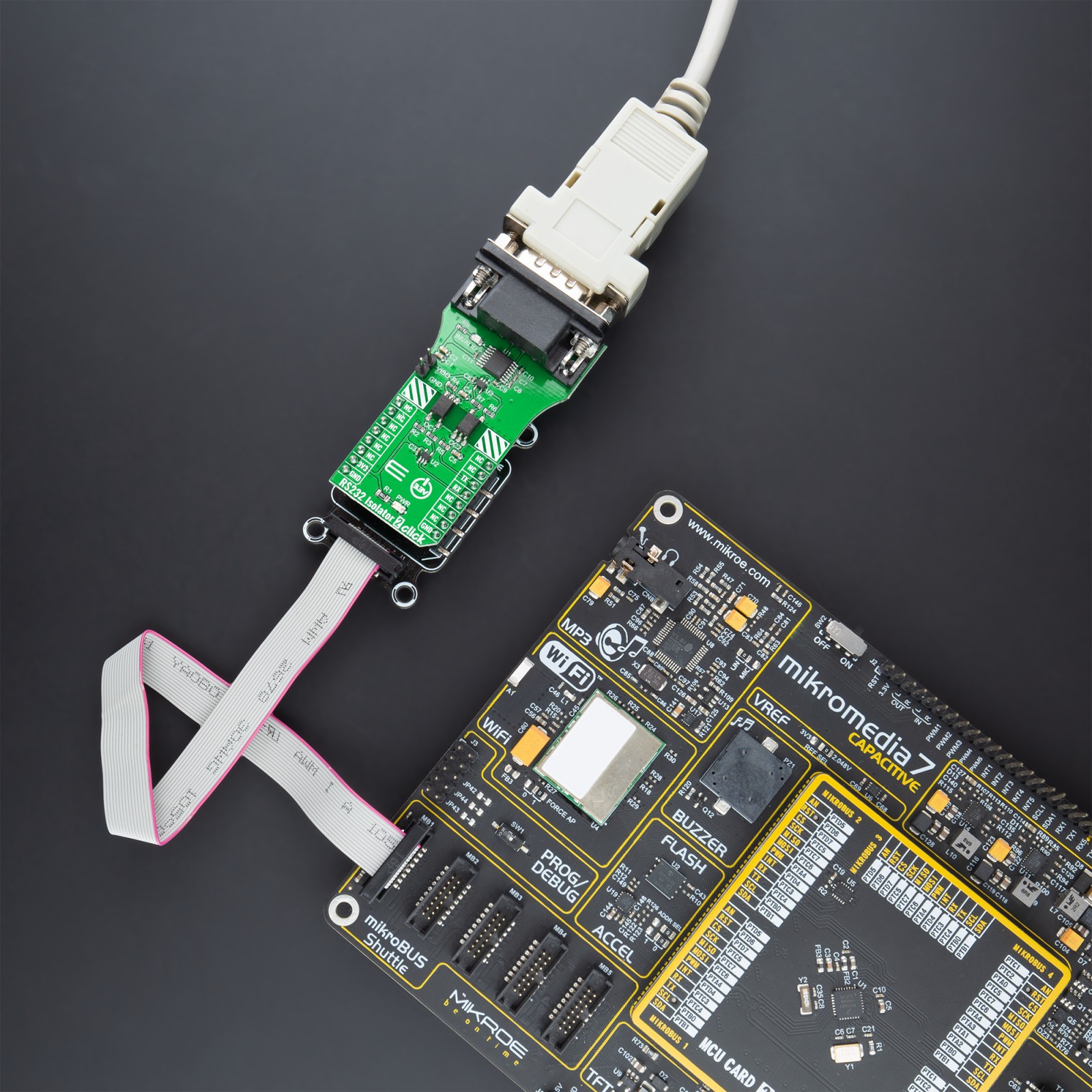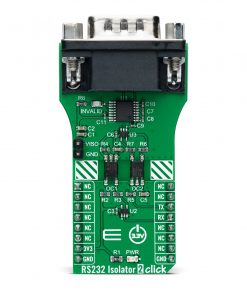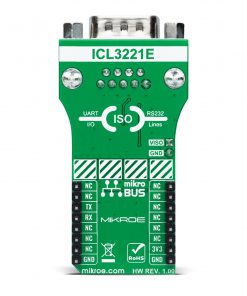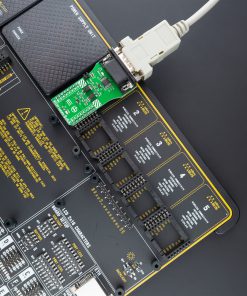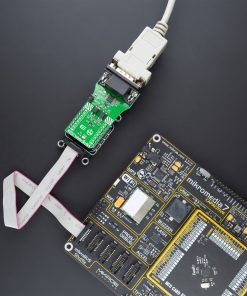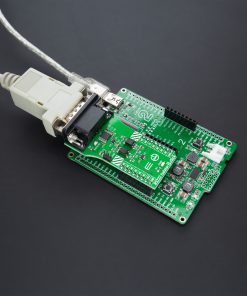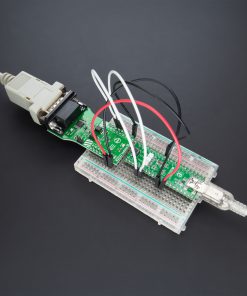RS232 Isolator 2 Click
R575.00 ex. VAT
RS232 Isolator 2 Click is a compact add-on board that contains a fully isolated transceiver used to provide secure and easy UART to RS232 conversion. This board features the ICL3221, a 3.3V powered RS232 transmitter/receiver that provides ±15kV ESD protection on its RS232 pins from Renesas. This Click board™ is characterized by an assured minimum data rate of 250kbps. It features an automatic power-down function and uses high-speed digital optocouplers to isolate the RS232 interface for 3.75kV isolation. It also possesses an LED indicator that indicates a valid RS232 signal at any of the receiver inputs. This Click board™ is suitable for isolation of RS232 signals, portable equipment, and where the low operational power consumption and even lower standby power consumption are critical.
RS232 Isolator 2 Click is supported by a mikroSDK compliant library, which includes functions that simplify software development. This Click board™ comes as a fully tested product, ready to be used on a system equipped with the mikroBUS™ socket.
Stock: Lead-time applicable.
| 5+ | R546.25 |
| 10+ | R517.50 |
| 15+ | R488.75 |
| 20+ | R470.35 |

